Estimated reading time 35 minutes, 9 seconds.
This article was originally published in the April/May issue of Skies, and is strictly from air operators’ perspectives. Find our follow-up story sharing pilot perspectives here.
Aviation operators in Canada’s northern and remote regions are hurting. Some aren’t sure if they’ll be able to maintain the essential services they have always provided — or even if they’ll be able to keep their planes in the air.
The summer of 2023 should tell the tale for many of them.
By then, the aviation industry should pretty much be back to normal after three years of pandemic-induced turbulence. But, as good as getting “back to normal” may sound, companies operating in Canada’s remote regions are nervous. Many believe Covid-19 was merely a distraction that delayed the onset of an even bigger one-two punch — and now, that blow is set to land during Canada’s busy summer flying season.
Crying Out for Crew
With the pandemic mostly behind us, operators across the country — large and small, southern and northern — are confronting a very real pilot shortage.
Translation: It’s definitely an employee’s market.

Welcome to a place where the airlines — known as Subpart 705 operators under the Canadian Aviation Regulations, or CARs — vacuum up most of the eligible, experienced pilots, enticing them away from the smaller 702 (aerial work), 703 (air taxi), and 704 (commuter) operators with promises of big salaries, shiny new jets, and predictable schedules.
Small and mid-size operators are left scrambling, competing against each other to offer more and more incentives to attract the few remaining qualified pilots in the market. At the same time, they’re casting an eye at the good pilots they still have on staff — and offering as many perks as they can afford to keep those pilots happy.
The situation is stressful for all small operators, but those in southern Canada have an edge because of their convenient location.
Imagine that your business is based on isolated Grand Manan Island in New Brunswick. Or, perhaps you’re in remote Sioux Lookout, Ontario; Yellowknife, Northwest Territories (NWT); or Whitehorse, Yukon. These days, you need a pretty good offer to attract an experienced pilot. Gone are the days when aviators made their fortunes in remote regions, building time as they developed stick-and-rudder skills under challenging flying conditions. Back then, many of them were just happy to land a supporting role as a dockhand, ramp attendant, or dispatcher — all in the hopes that a flying job would open up.
Today, there is a serious lack of qualified, mid-career pilots to fill senior flying roles in the North. Operators say resumes keep coming in from brand-new pilot graduates, but finding a Piper Navajo captain, for example, is next to impossible.
There have been rumblings of an impending pilot shortage for years. In 2018, the Canadian Council for Aviation & Aerospace (CCAA) released its Labour Market Information Report for Aviation & Aerospace, in which it predicted that industry would need 7,300 pilots by 2025. Even then, over half of the flight operators surveyed said that finding qualified employees was a serious challenge.

When Covid-19 burst onto the scene two years later, the pilot shortage ceased to be a problem overnight. Some operations shut down entirely, while airlines scrambled to offer early retirement packages to senior captains and furloughed hundreds of other pilots — promising to call them back when flying picked up. By the time things got going again, much of that experience had left the industry at the very time it was needed most.
Adding Regulatory Fuel to the Fire
Now, when almost every operator is clamoring for qualified pilots, Transport Canada has imposed legislation that means they will need even more of them.
In December 2018, the regulator published a set of amended aviation rules pertaining to flight crew hours of work and rest periods, also referred to as flight duty time (FDT) regulations. The new rules, billed as a science-based approach to better manage pilot fatigue, came into effect for 705 airline operators on Dec. 12, 2020, and for 703 air taxi and 704 commuter operations on Dec. 12, 2022. A separate regulatory division was enacted for 702 aerial work operators, effective Dec. 12, 2018. At the time, Transport Canada agreed with operators that medevac flights should have more flexible regulations due to the urgency and unpredictable nature of medical emergencies.
Regardless of their category, all aviation operators have the choice to follow the prescriptive rules as written, or to develop and submit for approval their own Fatigue Risk Management System (FRMS). According to Transport Canada, the latter option will “allow tailoring of fatigue management to air operators’ specific operational needs, provided that they ensure the level of flight crew fatigue and alertness is not adversely impacted in comparison to operating under the prescriptive rules.”
FRMS sounds like it might be a viable option for some northern and remote operators who provide unique services, but that hasn’t been the case so far. In fact, most smaller operators have chosen to follow the prescriptive FDT regulations because developing an FRMS is a costly and time-intensive process, and there’s no guarantee of success.
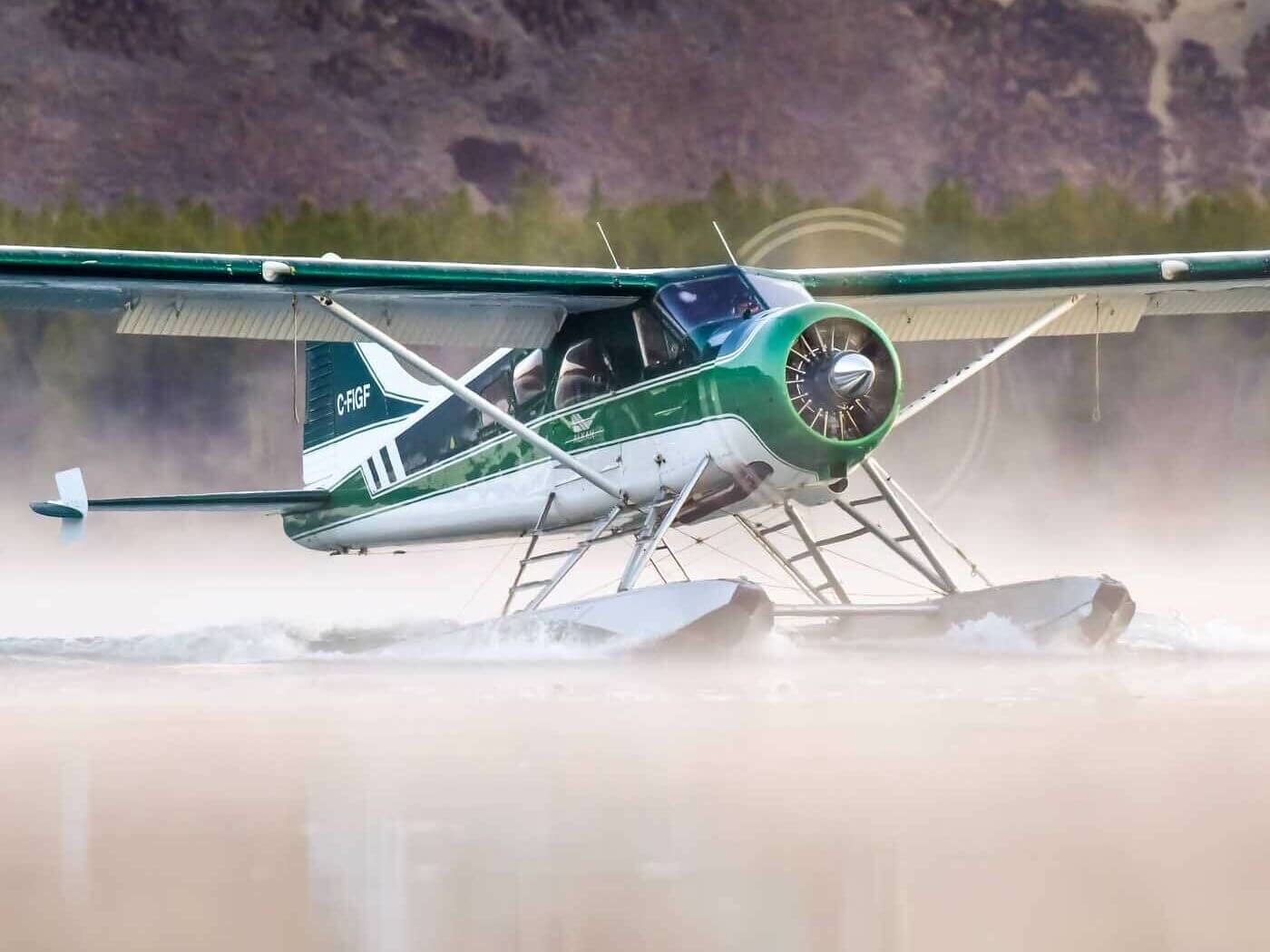
“It’s too convoluted and complicated to do an FRMS,” said Peter Sonnenberg, chief pilot at Atlantic Charters on Grand Manan Island in the Bay of Fundy.
He and his mother, Melanie Sonnenberg, run the business that was founded in 1982 by their father and husband, Klaus Sonnenberg. With a population of about 2,600, Grand Manan relies on Atlantic Charters’ four aircraft (a Piper Cheyenne III, one Cheyenne IIXL, and two Piper Navajos) for life-saving medevac flights to hospitals in New Brunswick. No two days are the same.
“Prior to Dec. 12, 2022, Atlantic Charters was an expert in the ad hoc niche of charter and medevac,” said Peter. “If you called us at 2 a.m., we had two crews available all the time and we could respond to requests fairly quickly.”
As a 702/703 operator, the pilot shortage and the new FDT regulations are causing the Sonnenbergs to lose sleep at night.
“Last year, we had nine pilots,” said Peter. “The year before, we had 10. Today, we have only two — myself as captain and one first officer. We are barely hanging on.”
He emphasized that while he still gets five resumes a week from brand-new pilots, it’s experienced aviators that are sorely lacking.
In April 2022, Atlantic Charters advertised for a captain and received only four resumes that met minimum requirements. After interviews, only two people qualified.
“One was scooped by Air Canada. The other signed our agreement, but then was also scooped by a jet operator.”

Atlantic Charters supported its medevac work through a partnership with the province of New Brunswick as well as its private charter revenue. But today, thanks to the pilot shortage in combination with the new FDT rules, it can no longer accommodate medevacs unless they are pre-booked transfers.
“The [previous] law said we could operate a pilot on call 24 hours a day for a certain period,” continued Peter. “We said we’d have two crews. We leveraged our two crews on call to do this ad hoc side of the business, and we did about 100 medevac transfers a year. But now, a company like ours can’t mix and match its crews. A charter crew can’t be medevac and a medevac crew can’t be charter. It’s one or the other, because medevac crews operate under a different set of rules. And now we only have one crew.”
He said his family’s business has been destroyed overnight.
“Last year, we did about 1,000 hours of charter work. To do the same amount of work this year, I would need six pilots for charter, plus an additional 11 dedicated pilots to handle medevacs. That’s 17 pilots, and we have two now. We just can’t compete for the few pilots who are out there.”
Melanie Sonnenberg said Atlantic Charters has always supported fatigue management, but now the future is uncertain.
“The pilot shortage has been compounded greatly by these regulations. Never in my wildest dreams could I ever have imagined we’d be at this place today. We need a correction,” she said.
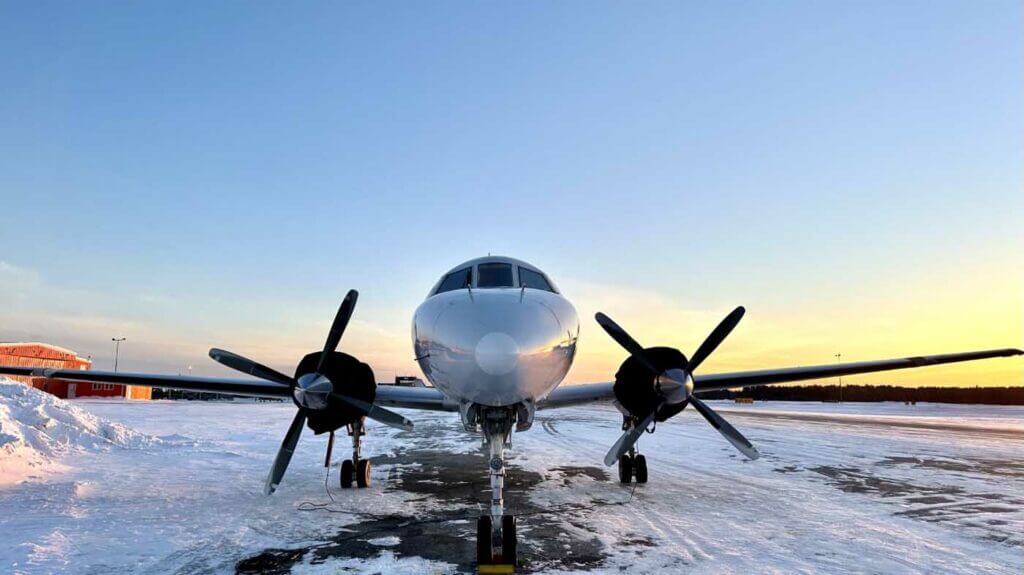
Some U.S. carriers are now offering $230,000 salaries for direct-entry captains, noted Peter. A captain on Grand Manan in 2017 made $70,000. Now, the expectation is closer to $110,000 and rising. It’s hard for a small operator in a remote location to compete.
“Why would you come to a remote community to make less?” asked Melanie. “It’s a huge culture shock. Sometimes, people came here because they wanted to learn how to fly in Atlantic Canada — they understood the value of the experience they would get. Now, it’s a whole different thing.”
Additionally, the Sonnenbergs are finding themselves in “training mode” more often, with today’s new first officers requiring additional instruction to bring them up to speed.
Medevacs have gone by the wayside, but the new FDT regulations have forced Atlantic Charters to turn away charter business, too.
“Last week, a band’s flight for an East Coast concert was cancelled and I got a call,” recounted Peter. “We had 48 hours left before the show. Could we come and get them in Florida? Because of 110-knot headwinds and the new duty regs, I could not. I had to schedule in the rest time and so we lost out on a trip to Florida. Another time, I couldn’t help a client who had to go to Quebec for a meeting. We’d have to bring on a lot more people to handle this ad hoc work. We need almost double the amount of people to do the same work.”
Needing more pilots to do the same amount of flying is a common refrain across the country.
At Alkan Air in Whitehorse, Yukon, Darryl Laliberte worries about essential services delivery to northern communities that rely on airplanes.

“For the North, we are an essential lifeline,” said Laliberte, who is operations manager at Alkan Air.
As a 703/704 operator, the company offers ad hoc charters and is the official medevac provider for the Yukon. Alkan Air operates from three bases: Whitehorse; Mayo, Yukon; and Nanaimo, British Columbia. With about 60 pilots on staff, its fleet includes Beech King Airs and 1900s, Dornier 228s, Cessna Caravans, and DHC Beavers and Otters.
Laliberte said pilots used to be shared between medevac and charter operations. Now, the new regulations require them to be separated into two groups.
“We’re following the prescriptive rules,” he told Skies. “They built in the ability for FRMS and the safety case, but it’s all data-driven. I would say our data set would be one of the most complicated; you’re trying to identify your highest periods of risk, but it’s incredibly hard to do that with an ad hoc, on-call schedule. There are no routines to base it on. The cost to develop an FRMS is prohibitive and there’s no guarantee your NOI (notice of intent to vary from the regulations) will be approved. It’s like pulling the slot machine handle on something that might not work.”
He, too, said Alkan Air will need to hire more pilots to do the same amount of flying.
“This whole thing was very poorly timed, with the industry coming out of Covid and things starting to ramp up,” continued Laliberte. “Even on the airline side of things, we don’t know exactly how it will affect them. This summer will be the test in terms of regular volume of work. I don’t think [the regulator] did enough consultation in terms of service delivery for the North. I don’t think there is a lot of understanding as far as the actual risk to fatigue versus the utility of what we’re trying to do in the North.”
To conform to the FDT regulations, Alkan Air is purchasing new scheduling software. Duty days have shrunk from 14 hours to 11, and “if someone is doing Whitehorse to Old Crow, Yukon, and is holding in Old Crow, then 11 hours become pretty tight.”
Additional costs of compliance include recruiting more pilots, more training, and more salaries to pay.
Laliberte said he’s not necessarily worried about the financial costs, since at the end of the day that will trickle down to clients. “I’m more worried about labor. If we once needed five pilots, now we’ll need 7.5 to do the same work. Where will we find them?”
To retain existing staff, the company has raised pay and implemented better benefits. Still, Laliberte said it’s hard to gauge the full impact of the new FDT regulations. It’s early days, but Alkan Air has already had to turn away business in order to stay compliant.

Recently, “the power was out in a remote community that is a seven-hour drive from Whitehorse, in the middle of the night in -45 C (-49 F) weather,” he recounted. “It was an emergency charter flight to restore an essential service. Within the new regulations there is a reserve availability window for pilots on call. This flight fell outside that window. My interpretation is that I could not even call the crew for that flight, so we didn’t do it. If it had been a medevac call, however, I could have sent a plane.”
Any reduction in service has a severe ripple effect in the North, and Laliberte said Indigenous governments are “seriously concerned” because they rely on aircraft for things like routine and emergency healthcare, justice and law enforcement, and groceries.
The next few months will paint the picture, he added.
“I’ll make all my judgments in October, when the busy season is done,” concluded Laliberte. “But one-size regulations do not fit all. Even the type of aircraft you are operating makes a difference. Slower aircraft take longer to do the same route as faster aircraft — so the company with the fastest aircraft has a competitive advantage when duty days are shorter. Fewer pilots can get more done in less time. Speed has become a big deal.”
Committed to Communities
At Yellowknife-based Air Tindi, specialty aviation is the name of the game. As a 702/703/704/705 operator, it primarily serves communities that do not have road access.
“We are truly a lifeline to those communities,” said Jen Reynolds, VP of operations at Air Tindi. “We fly in everything from groceries to medication to birthday cakes. We use every piece of our fleet to keep communities connected to the NWT’s capital city.”
Air Tindi employs about 80 pilots and operates a fleet of Twin Otter, Dash 7, King Air, Turbo Otter, and Caravan aircraft. It provides ad hoc airline services and is the sole medevac provider in the NWT, bringing people from their homes to hospitals in Yellowknife and Edmonton for specialty treatment. Landing on tundra tires, skis, wheels, or floats is par for the course.
In December 2020, in the middle of the pandemic, Air Tindi’s 705 operation switched to the new FDT rules. Reynolds said they had no choice, despite asking Transport Canada to delay implementation “because of the significant impact it would have at a time when no airline was operating at normal capacity.” The company’s 703 and 704 operations followed suit in December 2022.
Air Tindi is also following the rules as written. Like other northern and remote aviation providers, it believes FRMS doesn’t work for ad hoc operations.

“Every day is a new and different day,” explained Reynolds. “Scheduled service is only part of our business, so we book charters around it. FRMS only works for predictable schedules. As currently written, it is useless for a smaller company like ours.”
In the summer of 2022, when flying was returning to strength following the pandemic, Air Tindi got its first real look at how the new regulations would affect its operations.
“The 703/704 impact is absolutely massive for us,” said Reynolds. “The 705 transition was smaller, since the old regulations were already more stringent for this sub-part. But for 703 and 704 that have a strong seasonal peak… well, we’ve learned the new model does not allow for that. You can no longer fly hard in a busy season. When the sun comes back for long days, that’s when we used to do the majority of our work. Now, we have to figure out how to be less of a seasonal operator.”
Recently, Air Tindi analyzed how many pilots will be required to work within the new regulations while completing its traditional summer workload. “For us, where two aircraft used to be covered by three pilots, they will now be covered by four pilots. We will have a 25 percent increase in flight crew, resulting in significant labor cost increases.”
That aside, the looming question is where will these pilots come from? Reynolds said Air Tindi has always attracted pilots looking for unique experiences, but they’ve had to ramp up their recruiting efforts.
“It’s key to explain the North and the Tindi family to convince them we offer more than our competitors,” she added. “We try to show them the culture and the environment we work in. If we can bring them to Yellowknife and make them happy, they usually want to stay, settling into the work/life balance.”
Like many others, Air Tindi has evaluated its “perks” program, including salaries, benefits, and standby travel. It is even looking at renovating one of its buildings to create transitional housing for new employees.
Reynolds said the old regulations needed improvement and there is good science behind some of the new rules. “It makes sense that you work a shorter day if you start at 3 a.m. versus 7 a.m.,” she noted. “But it’s not logical to be so over-complex in terms of the number of and average length of segment legs.”
For example, Air Tindi used to be able to send an aircraft out of town for one or two weeks to a remote project site. The pilot would be given time off before and after that job, but the new FDT rules don’t allow for such arrangements.
“We’re having trouble trying to send aircraft away for environmental surveys. Flying long days for multiple days doesn’t work anymore.”

Like Alkan Air’s Laliberte, Reynolds said airlines that operate fast aircraft on short segments have a major competitive advantage.
“We fly specialized aircraft, including Dash 7s and Twin Otters that don’t value speed over STOL capability,” she said. “A jet can fly 11 segments of 28 minutes in length before they have to incur reductions or penalties [under the new regulations]. A much slower aircraft can only do four segments at 51 minutes before they take penalties.”
Reynolds pointed out another frustrating “North-ism” that has become evident: “Gravel runways deteriorate in the spring. You have to pull the faster aircraft off those routes and put the smaller, specialized aircraft on them. So, you incur more penalties simply by doing the safer thing. That’s a big piece of what the regulator missed when writing these regs. We cover large distances and fly slower aircraft, but we’re held to the same standard as Air Canada’s Toronto-Montreal flights.”
She wishes there had been more consultation with industry when the rules were being drafted, so the regulator could understand the situation in the North and offer some flexibility for operators to comply.
Ultimately, Reynolds is frustrated with the vicious cycle of hunting additional work to make up for higher operational costs; yet, if more work is obtained, even more pilots are needed. Air Tindi is looking at fundamental changes to its business model, including sending aircraft away for winter contracts.
“We are committed to finding ways to service remote communities,” she said. “Because we live in the North, we know it’s not an option to not service them. How do we make sure we can? We might have to look at a faster fleet of aircraft.
“For us, one of the biggest things is that the communities we serve will lose flexibility,” she continued. “If weather was poor in the past, we could delay departure or schedule another flight at the end of the day. Now, that flexibility has disappeared under the new regulations.”
Concern for the isolated communities they serve is top of mind with operators.
Frank Behrendt is president and CEO of SkyCare, a 703 air taxi operator that provides ad hoc charters and medevacs from Ontario bases in Sioux Lookout, Kitchener, and Thunder Bay, as well as St. Andrews and Winnipeg in Manitoba.

“For the most part, northern operators support organizations responsible for the delivery of essential and basic life services to remote communities,” he wrote in an email to Skies. “This includes police, mail, food delivery, healthcare, organ transport, and infrastructure.”
Behrendt said SkyCare’s after-hours charter availability has been reduced by 50 percent due to the complicated new FDT regulations. Emergency calls of any kind that come in outside of regular hours are difficult to support. Additionally, specialized healthcare professionals who are flown into remote communities by SkyCare must now shorten their clinic days, which means fewer appointments.
Like Air Tindi’s Reynolds and the other operators interviewed, Behrendt is frustrated. He doesn’t feel the government met its duty to consult with industry prior to implementing these regulations.
“It is particularly egregious that it has ignored input from NATA (the Northern Air Transport Association), and from northern and Indigenous communities and leaders,” he wrote. “The introduction of these rules in the middle of an acute pilot shortage, while the industry is trying to recover from a historic setback, is a reckless action and a serious mistake. It is naïve to think these new rules have improved safety in the North. They are having the opposite effect.”
NATA’s Glenn Priestley agrees. “Society system safety is being degraded,” said the executive director of the association that represents 40 northern operators. “NATA is so frustrated, as other industry associations are.”
He said the FDT rules were “forced through” with a promise that there would be additional discussion and consultation for 703 and 704 operators. Then, Covid came along, and further consultation went by the wayside as the industry shut down.
“Under the cover of Covid, a bunch of rules came through with no consultation on the impact these rules would have on Indigenous and northern communities,” continued Priestley. “I really believe there has been a dereliction of duty to consult with industry members that have the experience and expertise on what works best. We have a government that does not seem to want to work cooperatively to find solutions appropriate for northern and remote operational realities.”
Feeling the Impact
Montreal-based Air Inuit serves northern Quebec with passenger, cargo, medevac, and charter services, using a fleet of 30 aircraft, including the Boeing 737, De Havilland Dash 8 and Twin Otter, and Beechcraft King Air 350. Currently, Air Inuit has more than 1,000 employees, including about 210 pilots.
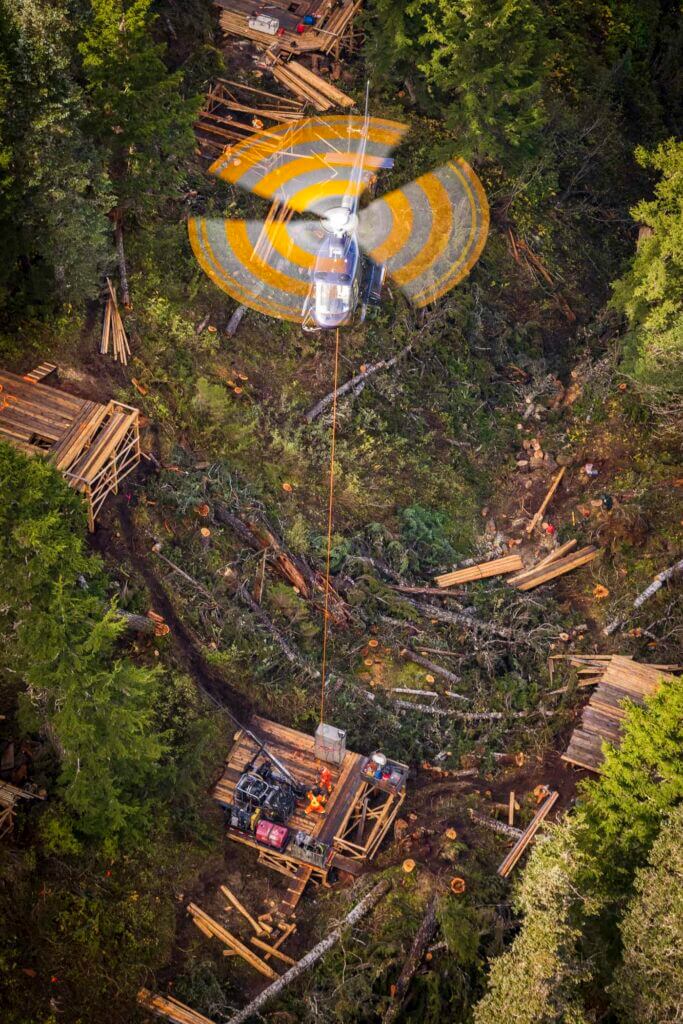
With its operations falling under subparts 703, 704, and 705, Air Inuit has been adjusting to the new FDT regulations since they came into effect for its airline in late 2020. Now, the entire company is operating under the prescriptive regulations.
The shorter duty days definitely have an impact.
“Previously, we’d have 14 hours to do a series of flights that took 10 to 11 hours,” explained Jonathan Lukca, Air Inuit’s regulatory and compliance manager. “Now, we may have 12 hours to do an 11-hour day. Pilots have said they are feeling good, but they are also feeling a bit more pressure to get their routes done. When our days are tight and there is an issue or delay, we’ll sometimes cancel one of the stops so we can arrive at destination within the prescribed 12 hours.”
Air Inuit has separated its charter department from its medevac department, since both sectors now operate under different FDT regulations.
While the company is committed to maintaining service across the Inuit homeland of Nunavik, Lukca admits it’s been getting more challenging.
“We need more pilots to conform to the regulations, but the industry is open and crewmembers are applying everywhere.”
He pointed out another ripple effect of having to hire more pilots: “Because we need more crew to do the same job, pilots who were doing 50 to 60 hours during a two-week tour may now be doing 20 to 25 hours. Therefore, it takes longer to get their ATPL (airline transport pilot license), which they need to [upgrade to] captain. It slows everything down. We’ve had to almost double the crews on site.”
Patrick Carriere, Air Inuit’s assistant director of flight operations, is also concerned about the lack of pilots. “Since 2020, the 705 operators have taken a lot of pilots from the 703 and 704 industry, creating a gap of experienced pilots,” he said. “We are actively working to retain the experience at Air Inuit; [since] we have different fields of operation, losing valuable experience becomes a concern. We have to do more training and put more people in seats. This is a concern for us. Additionally, for the last two years, the flight schools haven’t trained as many pilots. I’m very concerned about that.”
To deter its current pilots from looking elsewhere, Air Inuit reviewed working conditions and offered salary increases, an overhaul of company benefits, more attractive scheduling options, and sabbatical leaves.

It has also become more proactive with its hiring practices and had to lower its hourly experience thresholds for both new hires and upgrades. Behind fuel and salary augmentation, training has become Air Inuit’s third-highest operating expense increase; there is a lot of movement happening, with 47 pilots progressing through initial training in the last six months. This represents a more than 30 percent increase over the usual initial training.
Lukca said the other costs of complying with the new FDT regulations have been significant, including a crew management software purchase, expanding the crew planning team, and even building additional staff housing in Nunavik communities in northern Quebec.
Currently, Air Inuit owns housing facilities in seven Nunavik communities. To accommodate its workforce, it is now in the process of building more modern, hotel-style staff houses in the region’s largest communities.
“We have increased the number of pilots, which causes a lodging shortage in the North,” explained Lukca. “I went up there to do a pilot evaluation, but had to go up and return the same day because there was no room for me in the crew quarters. There are a lot of pilots on rotation because we are working up North. We are trying to improve general conditions.”
Aside from aviation, other industries are feeling the impact of Canada’s new FDT regulations. One of the biggest is mining, which is the largest private sector contributor to GDP in the NWT and Nunavut.
Tom Hoefer is executive director of the NWT & Nunavut Chamber of Mines. He represents 230 exploration, mining, and service/supply/consulting companies.
“All three northern territories together cover over one-third of Canada,” said Hoefer in an interview with Skies. “There are 100,000 people spread across this huge area. We don’t have the infrastructure to do a good job of opening up this country and servicing it, so we rely on air to move freight, equipment and materials, and people. Anything that touches aviation has a domino effect up here.”
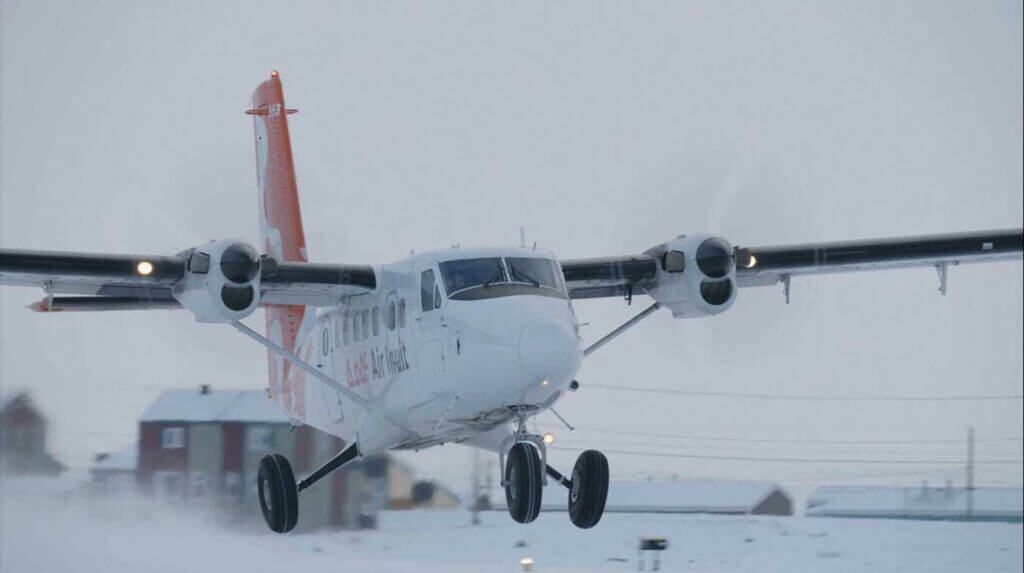
Hoefer said he’s been hearing a lot about the new FDT regulations. Mineral exploration and associated equipment moves in the North are invariably done by air, including both fixed- and rotary-wing aircraft.
“There are some very strange things happening compared to past practices,” he noted. “For example, subdivided work between moving people (703) and equipment (702) creates a bizarre situation where pilots say they can move a drill, but they are timed out to move people. Quite frankly, pilots often spend much of their day in the camp resting. They may move people or drills, but it’s not really a strenuous situation. Now, companies are saying they may need two pilots on some of these jobs in case one times out. More pilots will increase costs and, of course, there is an extreme pilot shortage.”
If there aren’t enough pilots, machines will sit idle and mining and exploration companies will face difficulties, impacting the viability of their season.
Something’s Got to Give
As the aviation industry heads into the busy 2023 flying season, northern and remote aviation operators are holding their collective breath.
Ahead, we have all the ingredients for the perfect storm: An aviation industry ready to explode into activity after three years of being subdued by a global pandemic; a severe worldwide pilot shortage that has operators competing ferociously for eligible candidates and lowering minimum experience requirements when they can’t be found; and, a new regulatory structure that fails to consider the unique needs of remote and northern operators, who deliver essential services to isolated communities.
Something’s got to give.
Chances are, the Canadian aviation landscape could look very different come the fall.
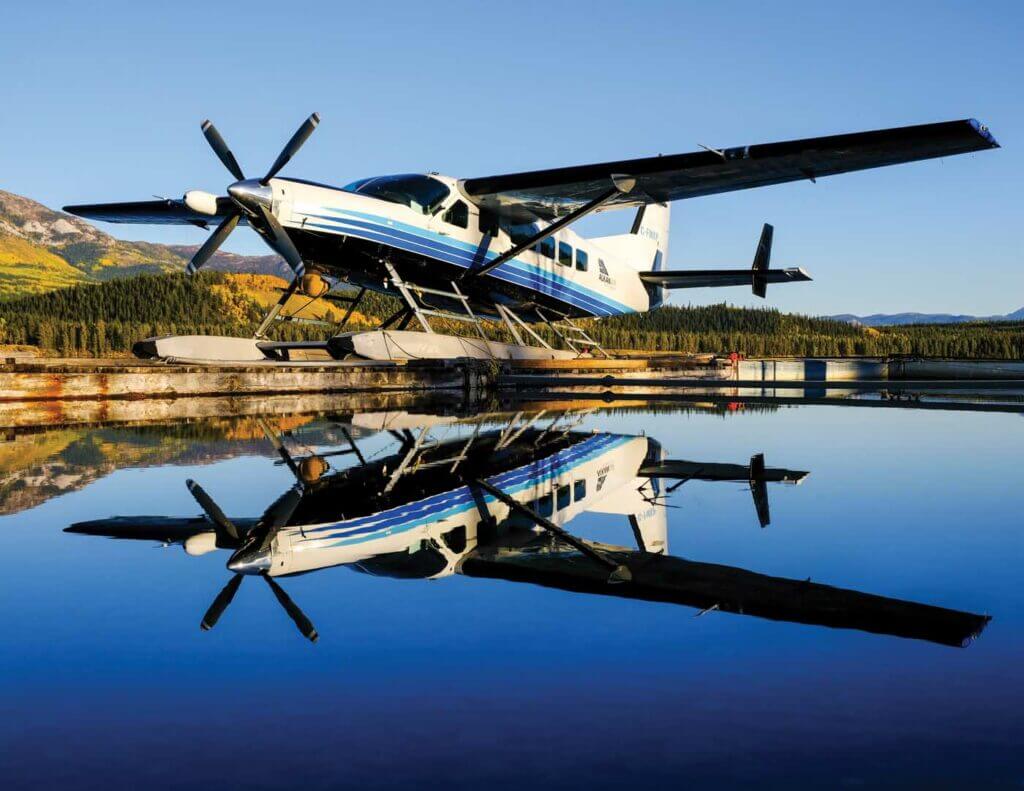
“This is the end of mom-and-pop aviation,” lamented Atlantic Charters’ Peter Sonnenberg. “The consequences of these regulations are devastating. We are a 40-year operator. We’ve made a comfortable living from this and we’ve served our community. Now, we find we can’t serve the community; we can no longer do medevacs. The government has brought us to our knees.”
Added Melanie Sonnenberg: “We don’t know what the future holds for our business. The fact is, this industry is in crisis. Full stop. Not one person in Ottawa seems to understand the severity of the situation and there is no sign of any plan to level the playing field.”
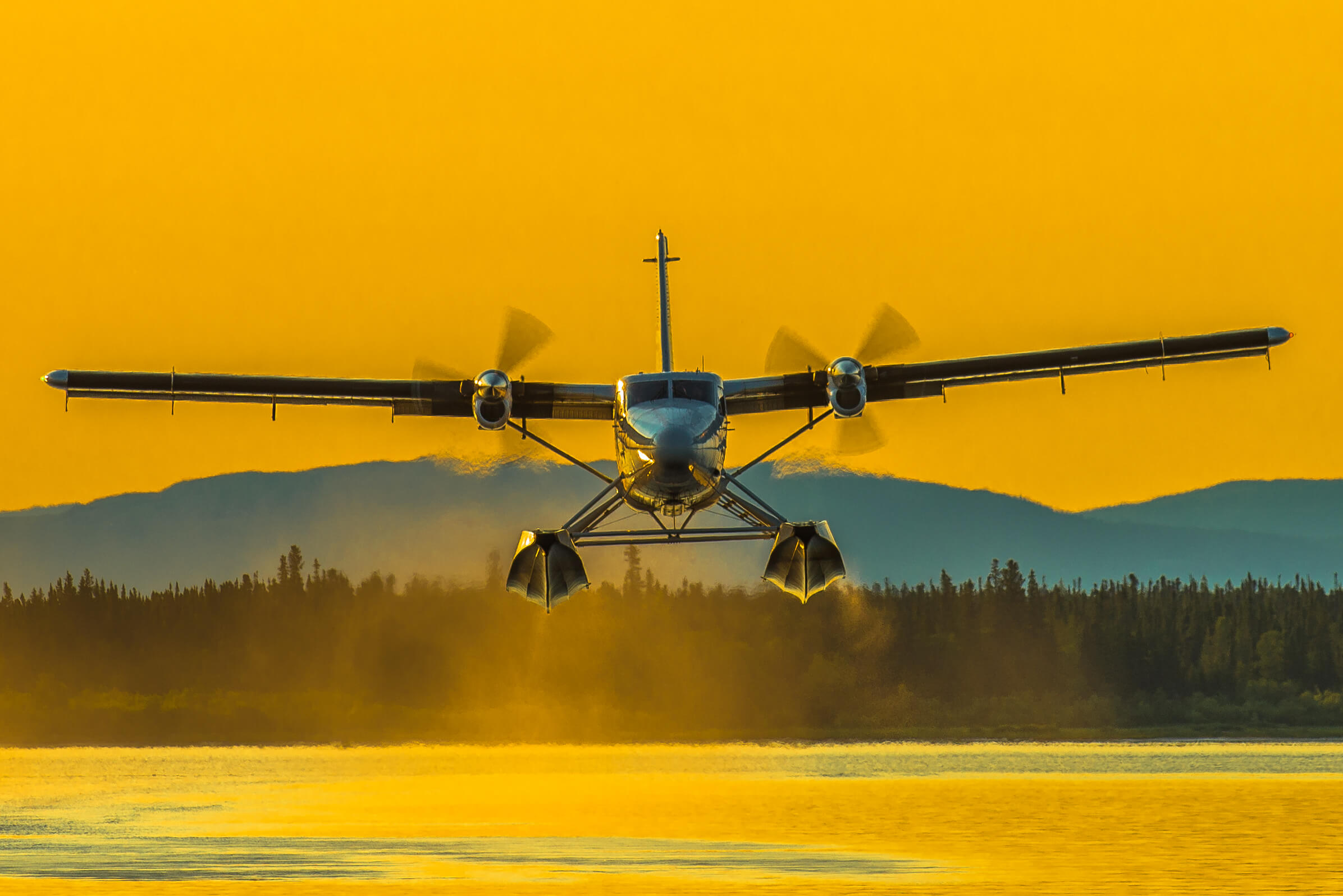

This is a great read. Listening to presidents and CEOs complain how they can’t abuse pilots anymore. I was the pilot, exceeding federal labour code hours of work limits because the aviation regulations permitted it. I was the one startled awake on a dark stormy night when the ground proximity warning system chimes “TWO HUNDRED (feet above the runway)”. After startling awake from the micro-sleep and somehow landing an airplane 20 seconds later, notice how the company president isn’t on the manifest, but instead sleeping in their bed at home. It’s amazing we didn’t have more fatigue accidents than we did. The north also has a tendency to be ignored when things go wrong, so there probably are fatigue related accidents where there wasn’t the political motivation to fully investigate. I nearly had an Air Canada 624 type event myself, but there was nobody on the taxiway and nobody around to notice, so nobody cared.
It is the north, and there is very few people paying attention, when something does happen, it doesn’t make the 5pm news. In the north, the operators are the ones analyzing the events, the ones in control of the safety details. The operators get to hide, (or simply ignore) the data and preach whatever narrative they think best suits their bottom line.
I haven’t fallen asleep while flying an airplane since the new flight duty time regulations came into effect. I am very thankful Transport Canada has ignored those more interested in money than my safety and the safety of my passengers traveling the north.
Some of these abusive northern operators are the ones crying the loudest about a pilot shortage and new duty time regulations. I can’t help but think they brought it onto themselves. I certainly wouldn’t recommend anyone to work for some (not all) of the operators mentioned in this article. So yes, if the working conditions aren’t appealing, it will be a self-fulfilling prophecy of a
pilot shortage. One has to wonder why so many pilots turned down their recall notices after COVID and never returned to the piloting profession…
100% lies told by these operators fact is when you go to these operators career section for FO position they want 1500hrs 100-300 multi time, IFR time and other experience, If they cant find pilots why there hiring min is still high and there are do many brand new pilots waiting to get hired in these airlines but they never give chance to new pilots so do t believe in there false wolf cries.